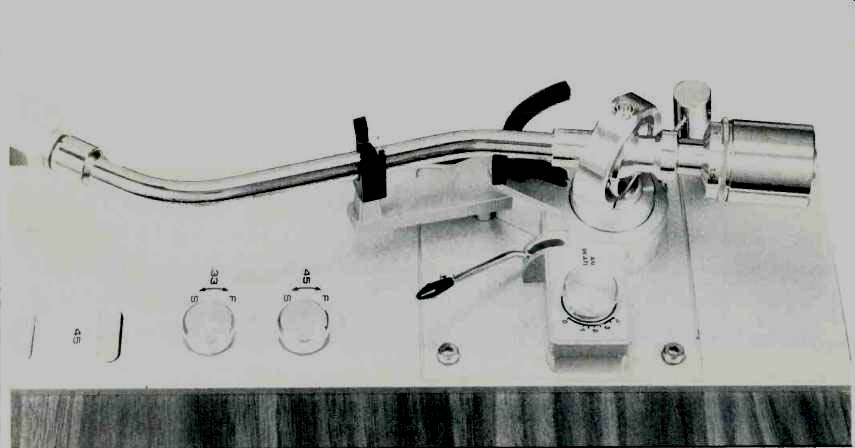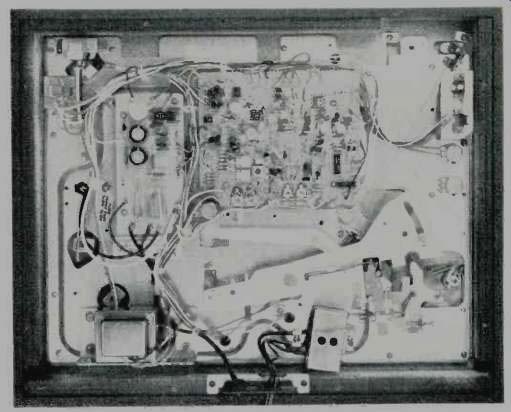
Manufacturer's Specifications
Type: Two speed.
Motor Type: 120-pole, quartz-controlled direct drive.
Wow and Flutter: 0.03 percent W rms.
Rumble: -70 dB (DIN B). Speed Control Range: ±6 percent.
Dimensions: With dust cover, 17 3/4 in. (43.375 cm) W x 14 in. (35 cm) D x 6 1/2 in. (16.25 cm) H.
Price: $300.00.


Direct-drive turntables have become very popular over the past two years, and they come in all price ranges with many different designs. The drive motor can be a.c., d.c., or Hall effect, while servo-control systems include phase-locked loop circuitry (with or without a quartz reference), frequency generator (FG) configurations, and others using all kinds of error-sensing variations. Fisher's Model MT-6250 is unlike its competitors as the motor is a three-phase 120-pole a.c.-type using the platter as a rotor. The coils are mounted on the top plate, and the drive force is transmitted to a magnetic band attached to the periphery of the platter. This linear motion concept is not new, and I am sure many readers will remember the Simpson turntable which made its appearance in the early 1950s. It was a very streamlined, low-profile design that never really caught on, probably because the platter needed a push to start! The Fisher unit uses more poles and is much more sophisticated, but the principle is the same.
Servo control is provided by a PLL circuit which can be switched off so the speed can be adjusted with a vernier control. (There are two; one for each speed.) The tonearm is an S-shaped design made of polished aluminum tubing and measuring nine inches from pivot to stylus. It rotates on a horizontal thrust-bearing mounted in a gimbal, but the vertical bearing is a conventional pivot type. The rear counterbalance is calibrated from zero to three grams, and a tiny lateral balance weight is mounted on a projecting rod near the pivot. An anti-skating dial is near the arm base; the cue lever is next to it, just in front. The arm is mounted on a satin-silver finished panel which extends from the front to the rear of the unit and which also contains two variable controls for speed plus three push buttons. One is for the Reject function, while the other two select the speeds. On the other side of the platter is a small sub-panel containing the on-off button, the quartz control unlock switch, and a strobe light. To the right of the platter, adjacent to the main control panel, is a spirit level which also functions as an overhang indicator. The dynamically balanced platter has a highly polished serrated edge and weighs 2.2 lbs. Styling is most attractive with the vinyl walnut-covered base making a pleasing contrast to the bottom section, finished in black. The unit stands on four large adjustable spring-loaded feet.
Measurements
For test purposes, a Stanton 881S cartridge was mounted in the lightweight headshell, and overhang was adjusted using the spirit level reference. This was not too easy, and the alignment was checked with a DB Systems protractor before making any measurements. Wow and flutter, using the DIN 45-507 weighting, came out at 0.035 percent and rumble measured -62 dB (ARLL), both excellent figures. Tracking error was less than 0.5 degrees per inch, and the calibration of the counterweight was found to be right on the nose. Vertical arm bearing friction was too low to measure accurately, but the horizontal thrust suspension was higher, at 0.15 gram.
In theory, the anti-skating dial should be set that much lower but I did not find this necessary. Arm resonance measured 8.5 Hz with a rise of 2 dB using the 881S cartridge. Optimum tracking force, incidentally, was 1.5 grams and the anti-skating dial was turned to a similar figure. Speed variation measured -8 and +6 percent, slightly more than claimed.
Moving the arm from its rest position starts the motor, and the cue lever can be employed to set the stylus in its required place. At the end of the record or if the Reject button is depressed the arm automatically returns and the motor is switched off. The cue lever is nicely damped in the downwards direction, but there was a tendency to swing to the right as the arm is lifted especially if the lever is moved too quickly. Other than that, I have no criticism to offer.
As the measurements indicate, the overall performance of the MT-6250 is on a par with the best turntables in its price range. The provision of a spirit level is an excellent idea, as is the adjustable feet which also help in reducing the possibility of acoustic feedback. Those with tight budgets might want to save $70 or so by buying Fisher's Model MT-6225. This unit offers a similar performance and uses the same kind of linear motion motor, but is minus the quartz control.
-George W. Tillett
(Audio magazine, Jun. 1980)
Also see:
Fisher 801 Four Channel AM/FM Stereophonic Receiver (Jul. 1972)
Fisher ST-425 Speaker System (Jan. 1975)
Fisher RS-Z1 Receiver (Equip. Profile, Aug. 1990)
= = = =